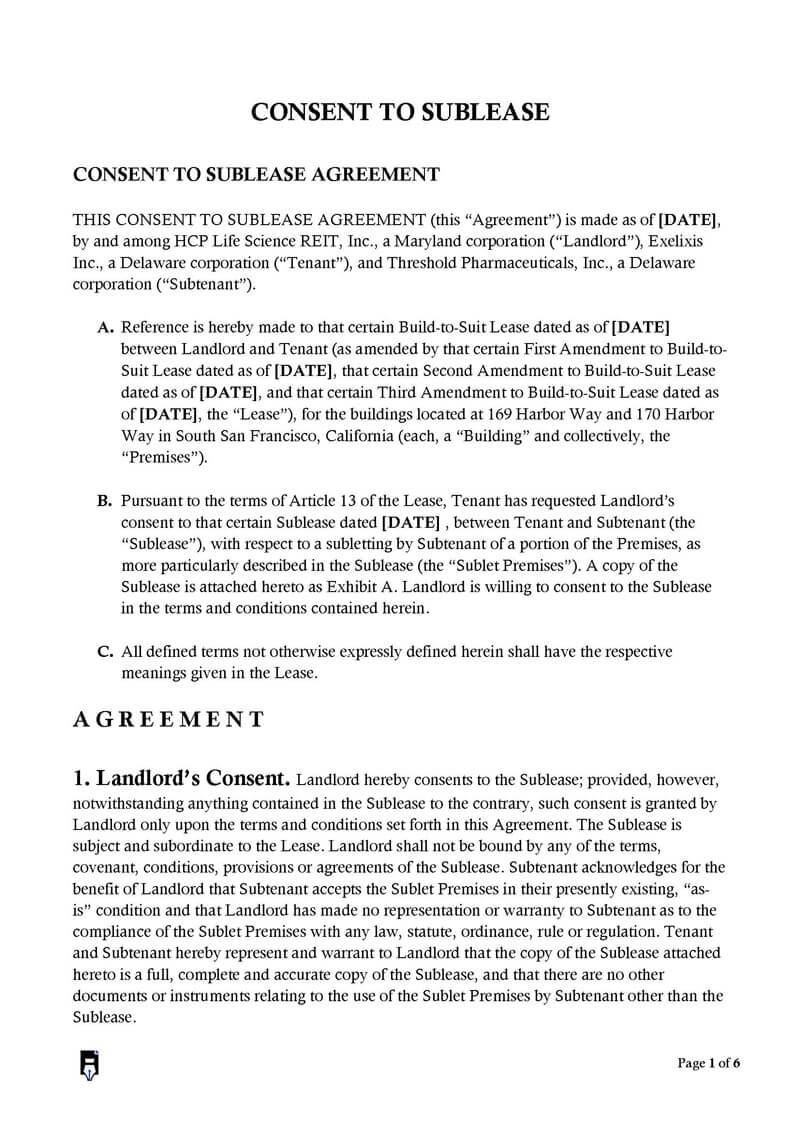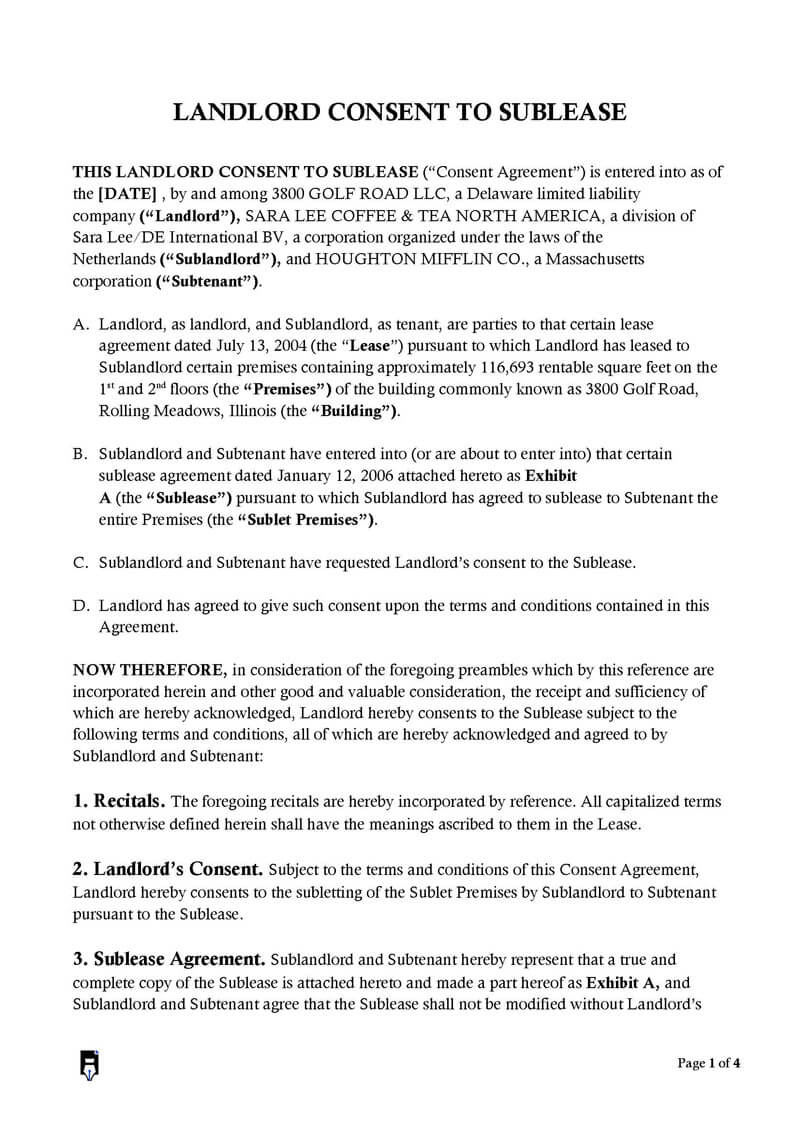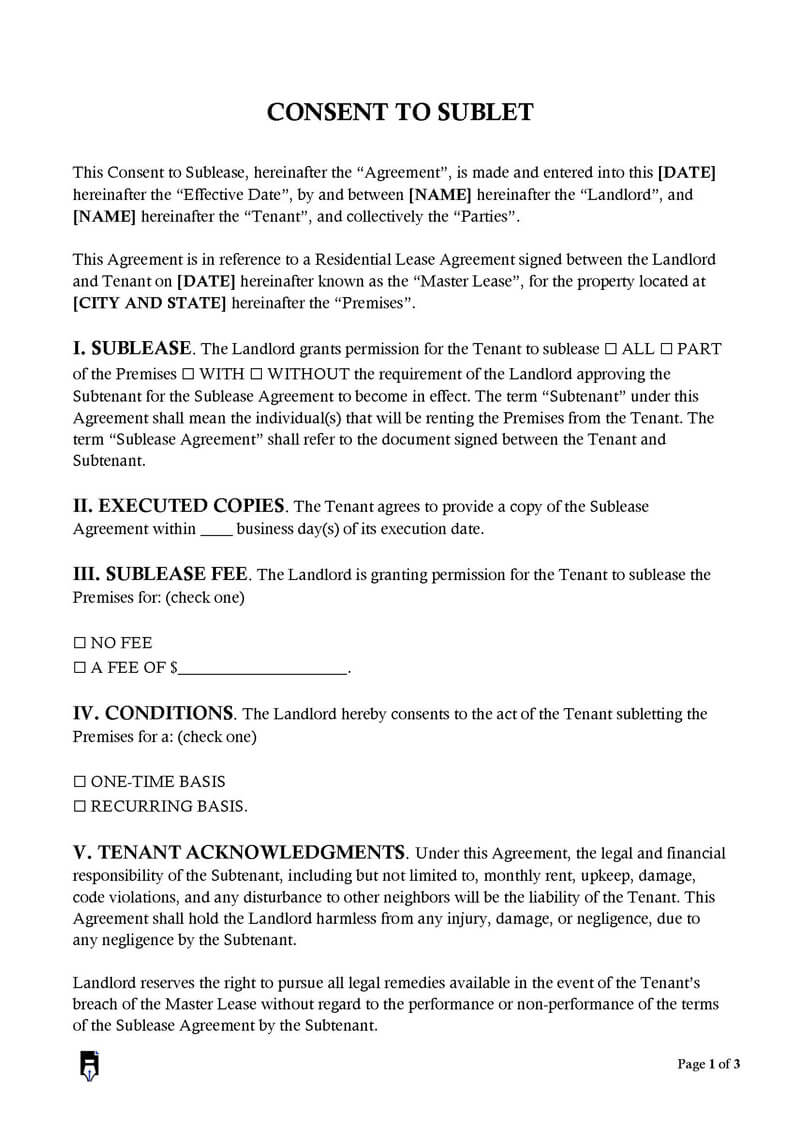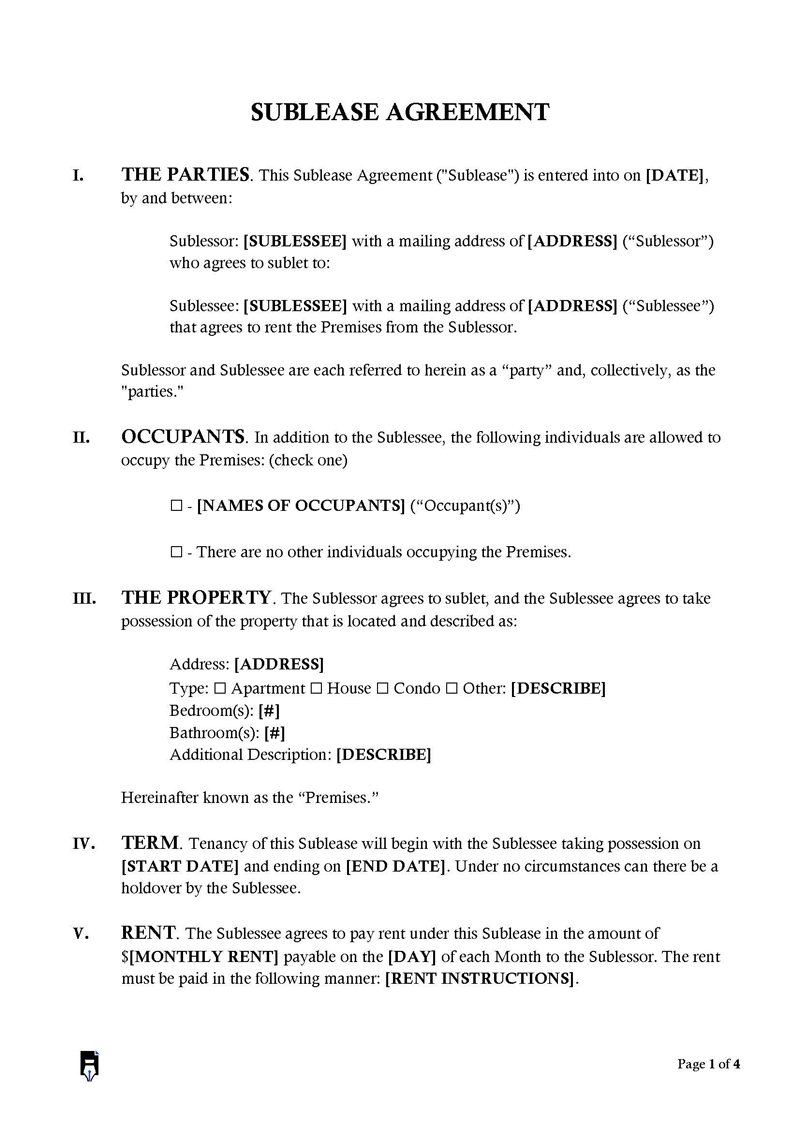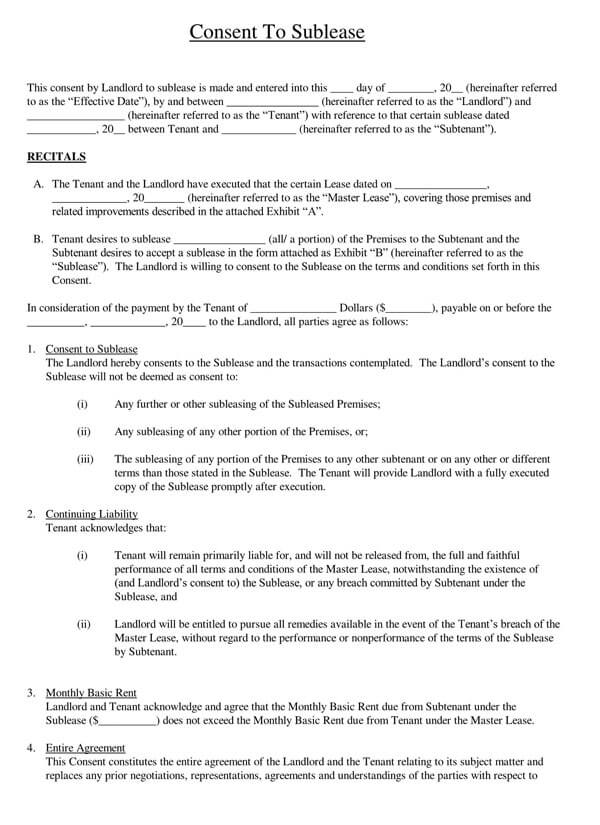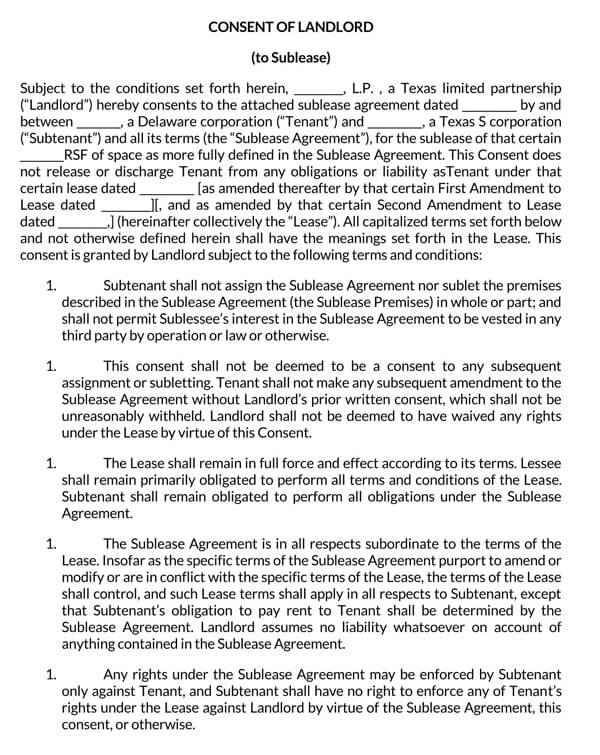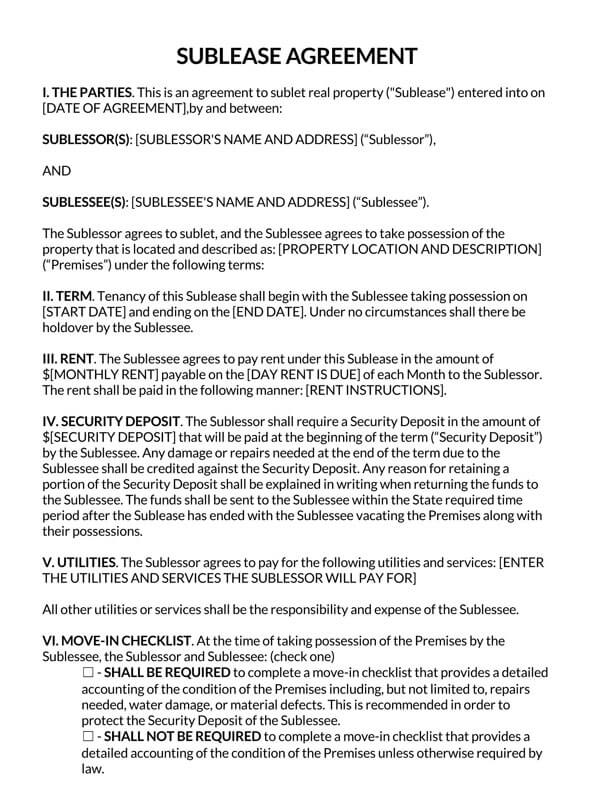A landlord’s consent to sublease form allows a tenant under a lease that prohibits subletting, to rent their property to a subtenant.
Landlords can sign a Consent to Sublease to give official permission to their tenants to sublease their rented unit. Under a subleasing contract, a tenant transfers some of their rights to a third party. In the majority of cases, a tenant must have the approval of the landlord before entering into or a sublease agreement.
A Landlord’s Consent to Sublease or sublease contract gives the tenant of a rental property the status of a sublandlord allowing him or her to rent out all or part of the property to a subtenant. In this contract, the original tenant will retain their obligations to the landlord besides being liable for lease violations or damages caused by the new subtenant. In most cases, the sub-landlord is the one who collects rent from their subtenant and then forwards it to the landlord.
With a sublease agreement, the expectations and responsibilities of all three parties (landlord, sublandlord & subtenant) are clarified. Planning with a sublease contract can prevent any future misunderstandings over maintenance duties, payment details, and liabilities. In most cases, a sublease agreement is a last resort by the tenant when they no longer wish to be bound by the lease and the landlord is not willing to release them.
Free Consent to Sublease Forms
Following are editable consent to sublease forms that can be downloaded for free:
Sublease Consent Form Vs Lease Assignment Form
A consent to sublease form only transfers some of the rights enjoyed by a Tenant to a third party. This is by leasing the property for a portion of the original lease term to a third party. It can also be done by transferring a part of the rented space in the Original Lease to a third party.
A lease assignment, on the other hand, transfers all of the rights a Tenant had under the original lease to someone else for the remainder of the official lease term. Put differently, a sublease transfers only a portion of the rights enjoyed by a Tenant to the third party while a lease assignment effectively transfers all the rights to a third party.
Tenant vs. Occupant
Although an occupant and a tenant may both be residing in a rental property, it is only the tenant who can sign the lease agreement and is bound legally to its terms and conditions. In contrast, although an occupant might be listed on the lease he or she is not directly liable for lease violations or rent payments.
A tenant might, for example, name their minor child on their lease as an occupant. Landlords typically require permission before allowing an occupant to legally reside in their property. If a tenant sublets or subleases their property without their consent, the landlord can consider the subtenant an illegal occupant and even take suitable steps towards evicting or removing the person.
Bonus: How to Write a Sublease Contract
Crafting a sublease contract professionally requires a few steps to be followed in the process.
These steps are as follows:
Provide details about each party
Identifying and recording the full legal names of each party and their role is the first step of crafting the sublease contract. The original leaseholder is the Tenant (sub-landlord) and the individual person subleasing is the Subtenant.
Document the basics
Record the Street Address, City, and State where the premises being subleased are physically located while preparing this part of the lease. These details/facts may be extracted from the original lease for precision.
Supplement the articles with the requested information
Several articles in the Sublease Consent require direct attention. Define how much of the property or the extent to which the Landlord is allowing the Tenant to sublease to a third party or parties. If the Tenant is not obligated to seek the Landlord approval for each Subtenant, this must be indicated.
The Article should also indicate if and when a copy of the Sublease should be given to the Landlord. It must also be clarified if the Landlord intends to collect a Sublease Fee from the Tenant. The supplement article must report the Name of the State holding jurisdiction over Master Lease, Landlord’s Consent to Sublease, and this Consent.
Sign the form
The Landlord must append or print their signature in the sublease contract. The signature should be followed by the date of signing. The Tenant seeking approval from the Landlord will also sign the agreement and record the date of signing.
By obtaining written contracts, tenants create an official record of the terms agreed upon by the three parties to prevent future disputes. Besides, properly screening applicants helps in guarantying a reliable tenant that can be trusted by both the tenant and landlord.
Frequently Asked Questions
Can the Tenant sublease a portion of the property rather than the entire property?
Yes, the Tenant is allowed to sublease all or part of the leased premises.
What additional purposes can the subtenant make of the property?
The Tenant (Sublandlord) can only authorize the leased Subtenant to use the property under consideration for purposes that the Landlord has approved. Before the Subtenant is allowed to use the property for other purposes not stated in the Original Lease, the Tenant must obtain the Landlord’s consent.
Who should the rent be paid to?
The Tenant can choose whether they will be collecting the rent from the Subtenant and then pass it on to their Landlord or have the Subtenant pay directly to the Landlord.
I do not know when the Consent will be signed. Can I fill in the date later?
Yes, this can be done by selecting ‘Unsure’ as the date when the consent to sublease form will be signed. You can insert a blank line into the contract template so that the correct date can be added after printing the document.
Who should sign the consent to sublease form?
Although the Landlord must sign the consent to sublease form, it is advised that the Tenant and Subtenant also provide an acknowledgment.
Can I sublet without permission and what are the consequences?
Generally, most landlords require the tenants to obtain written landlord’s permission before subleasing. Lease contracts often include clauses covering subleasing, so as a tenant you should refer to the original contract before you enter into a sublease contract with a subtenant.
Unless a Landlord has expressly agreed to sublease in the Original Lease, a Tenant cannot sublet the property without their consent. If a tenant subleases without permission, and the Original Lease Agreement prohibits it, the landlord can notify or report the tenant of a lease violation.
How do you protect yourself when subletting?
A sub landlord or Tenant can take several steps to protect themselves when subletting a property. These getting a Landlord’s Consent to Sublease to make sure the process of subletting is legitimate and using a rental application for screening potential new subtenants. An additional protective measure is to have the subtenant sign a Sublease Agreement to clarify each party’s obligations and rights.
